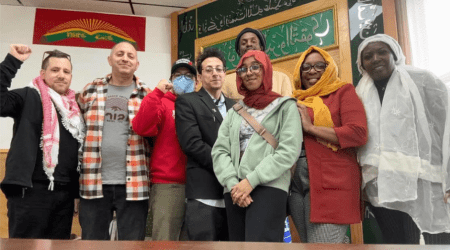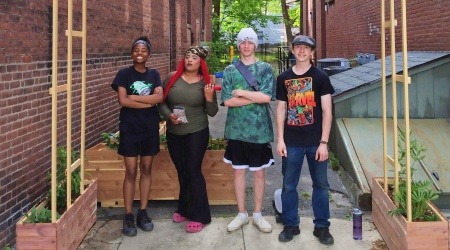What we mean by ‘Shifting Power in Decision-making’
The dominant system treats the planet as expendable and tells us certain lives are necessary collateral. Therefore this system has given us the green light to pollute, destroy and endanger. We recognize that lived experience, especially of communities that have been harmed by this system, contains the wisdom we need to create better systems. Our current political, social and economic system allows for the consolidation of wealth and power for the few, at the expense of the many. This imbalance of power often leads to decisions that are made for communities without their input.
While grassroots groups have the ability to flip these power structures and build alternative solutions, they may also replicate the same systems that privilege only certain people’s needs for health, safety, and wellbeing. The issues at hand are urgent, but without creating groups that challenge these dynamics, our solutions will remain faulty at best, and perpetuate oppressive dynamics at worst. The Shifting Power in Decision-making Guiding Practice aims to give organizers a structure with which to reflect on how their group is already operating under the guidance of this value , and what they could improve upon.
How we see grassroots groups putting this into practice:
Group leadership directly represents the community.
This may seem over simplified, but the reality is that many groups do not have community members, and specifically the stakeholder group they aim to reach with their programs, directly represented in their decision making body. We find this can lead to underlying issues of doing the work on behalf of, rather than with, them.
We find groups are most successful when they reimagine and are creative about the way decisions are being made by considering alternative modes for decision-making protocols using technology, rotating meeting times and locations. Successful groups are forming community advisory boards that help them hear directly from community stakeholders at the beginning, in the design phase of a project, and not solely through a post-program evaluation survey. This can be especially useful for engaging youth members.
They are forming and adapting their decision-making process around accessibility to community stakeholders, rather than mandating a process without prior input such as inviting community members to engage in a pre-formed process or meeting structure and then being surprised when they do not actively engage).
We also find that groups have success pursuing consensus or consent-based decision making rather than majority vote. Majority vote, though a quicker process to reach a decision, may lead to creative and innovative ideas being steamrolled.
Group composition is diverse across numerous self-identifiers or demographics.
Groups are interrogating the makeup of their core decision making body. Representation doesn’t necessarily mean implementing quotas. It is about building in a group culture that values self awareness and self assessment that can then lead to changes in who has access to the decision-making process. Varied representation leads to varied lived experiences and perspectives in defining the problem and designing the solution.
For groups that are new to this type of self reflection or to shifting the makeup of core membership, this work can be slow and requires significant effort to build authentic trust and relationships. Some groups require core members to be trained in implicit bias and white supremacy culture. Others consider how white and otherwise more privileged members can participate in consultative and supporting roles, more so than direct decision making roles.
Groups have transparent feedback processes.
Groups are opening up decision-making pathways and thinking outside of traditional structures such as relying on standing meetings as the driver of decision making. Some groups are utilizing the connectivity of technology to gain more constant feedback - group chat lines, social media, online surveys, pop-in hours. This also makes it possible to get community input in real time, rather than solely at the completion of a project.
Groups are hosting listening sessions to map out project design with community members, so that community stakeholders see themselves in the work. This requires a certain level of upfront accountability to how input will be used.


